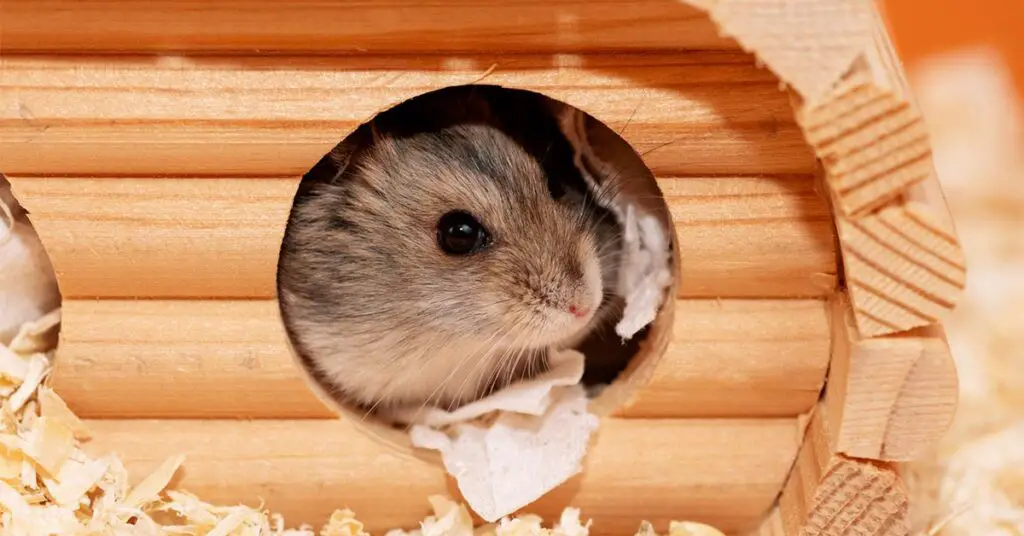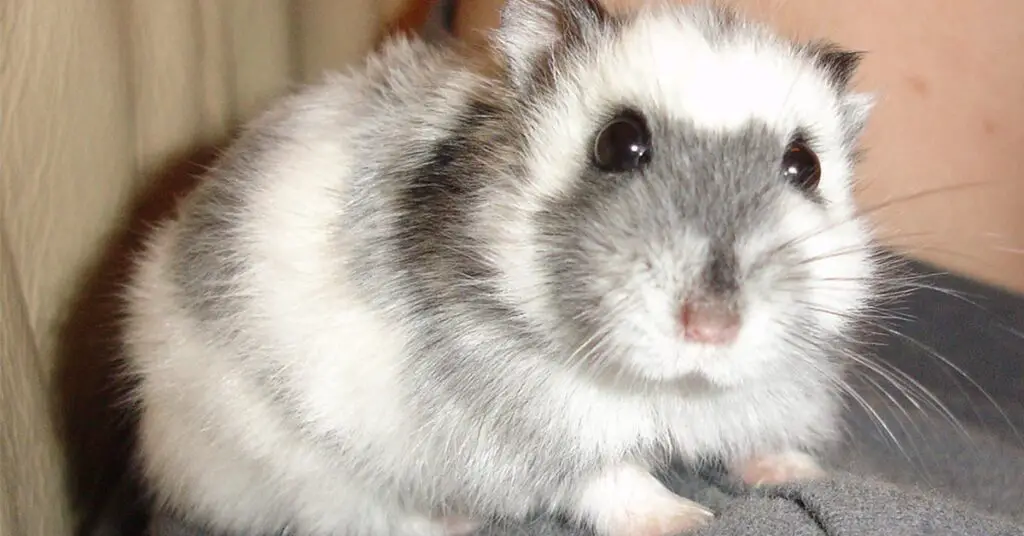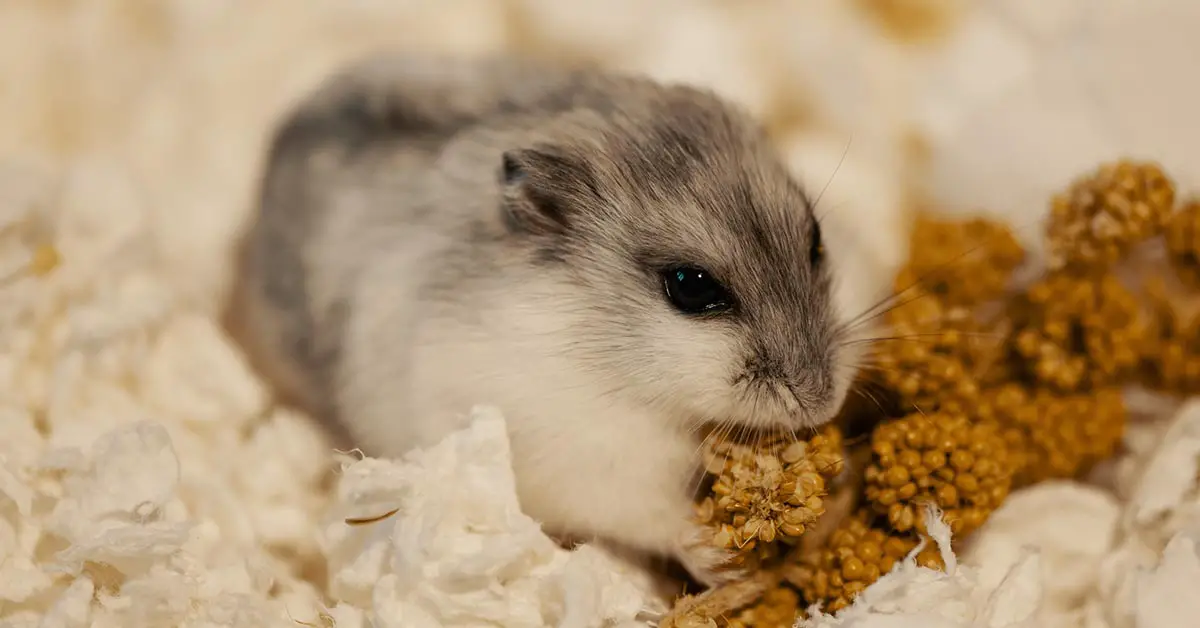The Russian Winter White Hamster is a small, cute, and fluffy rodent that has gained popularity as a pet in recent years.
These hamsters are native to Russia and are known for their unique ability to change color during the winter months.
Also Known As
This hamster breed is also known as the Winter White Dwarf Hamster, Russian Dwarf Hamster, Djungarian Hamster, Striped Dwarf Hamster, Siberian Hamster, or Siberian Dwarf Hamster.

In this article, we will delve into the history, physical characteristics, personality, and care of this hamster to give you a better understanding of this fascinating breed.
History
The Russian Winter White is native to the northern regions of Russia, Kazakhstan, and Mongolia. These hamsters were first discovered in the 1920s and were later imported to the United States in the 1990s.
Characteristics
One of the most notable physical characteristics of the Russian Winter White is its ability to change color.
Winter
During the winter months, these hamsters will turn white or light grey to blend in with their snowy surroundings and protect themselves from predators.

Summer
In the summer, their coat will revert to its original color, which can range from shades of brown, grey, and black. Russian Winter Whites also have a thick, soft coat of fur and small, cute ears.
They are a relatively small breed, usually weighing around 2-3 ounces and measuring about 4-5 inches in length. This makes them an ideal pet for those with limited space, as they do not require a large cage.
Personality
In terms of personality, Russian Winter Whites are generally active, curious, and social animals. They are known to be quite playful and enjoy interacting with their owners.
These hamsters are nocturnal, which means they are most active at night and will sleep during the day.
They also have a strong burrowing instinct and will enjoy digging and hiding in their bedding material.
Care
Caring for a Russian Winter White is relatively easy, as long as its basic needs are met. These hamsters require a cage with plenty of space to move around and explore, as well as soft bedding material to burrow in. They should also have a wheel to exercise on and plenty of toys and chewables to keep them entertained.
Diet
It is important to provide a balanced diet for your hamster, which should include a mix of seeds, pellets, and fresh fruits and vegetables. Russian Winter Whites are prone to dental problems, so it is essential to provide plenty of hard chewables to keep their teeth trimmed.
Pairing
One thing to keep in mind when caring for the Russian Winter White is that they are social animals and do best when kept in pairs. If you are planning to get more than one hamster, it is important to introduce them slowly and make sure they get along before placing them in the same cage. It is also important to handle this breed gently and frequently to help them become tame and socialized.
Where Can I Buy A Russian Winter White Hamster?
There are a few different places where you may be able to find Russian Winter Whites for sale. One option is to check with local pet stores in your area. Some pet stores may carry them, or they may be able to special order them for you.
Another option is to look for Russian Winter Whites for sale online. Several websites specialize in selling small pets, including hamsters. You may be able to find them for sale on sites like Petco, Petfinder, or through specialty hamster breeders.
You may also be able to find Russian Winter Whites for sale through local animal shelters or rescue organizations. These organizations often have a variety of small animals available for adoption, including hamsters. Adopting a hamster from a shelter can be a great way to give a new home to a pet in need.
It’s important to do your research and choose a reputable source when looking for a hamster. Make sure to ask the seller or breeder about the hamster’s health, age, and background, and be prepared to provide a suitable home for your new pet.
Click here for a link to the American Veterinary Medical Association. They offer a lot of statistics on pet ownership.
Can The Russian Winter White Be Bred With Other Hamster Breeds?
Yes, Russian Winter White Hamsters can be bred with other species of hamsters. However, it is generally not recommended to breed different species of hamsters together, as this can result in hybrid offspring that may have unpredictable traits and may not be healthy.
In general, it is best to breed hamsters within their species to maintain genetic diversity and prevent the potential for health problems. Hamsters have specific care and nutritional requirements, and crossbreeding different species can lead to difficulties in meeting these needs. It is also important to consider the ethical and welfare implications of breeding hamsters and to ensure that they are being bred responsibly and with the well-being of the animals in mind.
If you are interested in breeding hamsters, it is important to do thorough research and consult with a veterinarian or a reputable breeder to ensure that you are prepared to provide the necessary care and support for the hamsters and their offspring.
Comparing To Other Breeds
Several different species of hamsters exist in the world, though the most common species kept as pets are the Syrian Hamster, also known as the Golden Hamster, and the Dwarf Hamsters, which include the Russian Dwarf Hamster, the Chinese Hamster, and the Roborovski Hamster.
Comparing the Russian Winter White to other popular hamster breeds can be interesting, as there are some notable differences in size, appearance, personality, and care requirements.
Syrian Hamster
For example, the Syrian Hamster, also known as the Golden Hamster, is generally larger than the Russian Winter White, with adults reaching up to 8 inches in length. Syrian Hamsters also have a more distinctive appearance, with a longer body and a more uniform coat color.
In terms of personality, Syrian Hamsters are known to be more independent and territorial than Russian Winter Whites, which are generally more social and interactive.
When it comes to caring, Syrian Hamsters may require a larger cage and more attention, as they are more prone to loneliness and boredom.
Chinese Hamster
On the other hand, the Chinese Hamster is smaller and slimmer than both the Russian Winter White Hamster and the Syrian Hamster, with a lifespan of about 2-3 years.
Chinese Hamsters are known to be more timid and sensitive and may require a more gentle approach when it comes to handling and training.
Overall, each hamster breed has its unique characteristics and care requirements, so it is important to consider these differences when choosing a pet.
Do Russian Winter Whites Live In The Wild?
Yes, in their native regions of Russia, Kazakhstan, and Mongolia they can be found living in the wild.
Habitat
These hamsters are known to inhabit a variety of habitats, including grasslands, forests, and steppes. In the wild, they are typically found in burrows or nests that they have dug themselves, where they sleep and raise their young. They are active at night and spend their days sleeping or resting.
Prey
In the wild, they are prey animals and are often hunted by predators such as snakes, birds of prey, and larger mammals. To protect themselves, these hamsters have developed several adaptations, such as their ability to change color during the winter months to blend in with their snowy surroundings. They are also known to be fast runners and can escape from predators by quickly running and dodging through their burrows.
Despite their natural habitat in the wild, Russian Winter Whites have also been domesticated and are popular pets around the world.
Do People Ever Eat The Russian Winter White?
It is not common for people to eat Russian Winter Whites or any other species of hamster. Hamsters are generally considered to be companion animals rather than food animals, and they are not commonly kept or raised for their meat. Hamsters are not a traditional source of food in most cultures, and there is little demand for hamster meat as a food product.
In some parts of the world, hamsters may be used as a source of food in times of extreme poverty or in situations where other food sources are scarce. However, this is not a common practice, and it is generally considered to be unethical to kill and eat hamsters or other pet animals. Hamsters are kept as pets for their companionship and enjoyment, and it is important to treat them with care and respect.
Scientific Classification
The scientific classification of the Russian Winter White is as follows:
- Kingdom: Animalia
- Phylum: Chordata
- Class: Mammalia
- Order: Rodentia
- Family: Cricetidae
- Genus: Phodopus
- Species: P. sungorus
In this classification system, the Russian Winter White belongs to the kingdom Animalia, which includes all animals.
Within the kingdom Animalia, the hamster belongs to the phylum Chordata, which includes animals that have a spinal cord.
The hamster is also classified as a member of the class Mammalia, which includes mammals that have mammary glands and give birth to live young.
Within the class Mammalia, the Russian Winter White belongs to the order Rodentia, which includes rodents such as mice, rats, and squirrels.
The hamster is also a member of the family Cricetidae, which includes hamsters, voles, and lemmings.
The hamster is classified in the genus Phodopus, which includes several species of dwarf hamsters.
Finally, the hamster is classified as the species P. sungorus, which is its scientific name.
Conclusion
In conclusion, the Russian Winter White Hamster is a small, cute, and fluffy breed that makes for a wonderful pet. With their unique ability to change color and playful personality, these hamsters are sure to bring joy and excitement to your life. As long as their basic needs are met and they receive proper care and attention, Russian Winter Whites can make loving and loyal companions.
Frequently Asked Questions
Q: Are Russian Winter Whites good pets?
A: Russian Winter Whites can make great pets for those who are willing to provide them with proper care and attention. These hamsters are active, curious, and social animals that enjoy interacting with their owners. They are also relatively easy to care for, as long as their basic needs are met.
Q: How big do Russian Winter Whites get?
A: Russian Winter Whites are a small breed, usually weighing around 2-3 ounces and measuring about 4-5 inches in length.
Q: How long do Russian Winter Whites live?
A: Russian Winter Whites have a lifespan of about 2-3 years.
Q: Do Russian Winter Whites change color?
A: Yes, Russian Winter Whites are known for their ability to change color during the winter months. They will turn white or light grey to blend in with their snowy surroundings and protect themselves from predators. In the summer, their coat will revert to its original color, which can range from shades of brown, grey, and black.
Q: What do Russian Winter Whites eat?
A: Russian Winter Whites should be provided with a balanced diet that includes a mix of seeds, pellets, and fresh fruits and vegetables. It is important to provide plenty of hard chewables to keep their teeth trimmed, as these hamsters are prone to dental problems.
Q: Are Russian Winter Whites nocturnal?
A: Yes, Russian Winter Whites are nocturnal animals, which means they are most active at night and will sleep during the day.
Q: Do Russian Winter Whites need a lot of space?
A: Russian Winter Whites require a cage with plenty of space to move around and explore. It is important to provide them with a wheel to exercise on and plenty of toys and chewables to keep them entertained.

